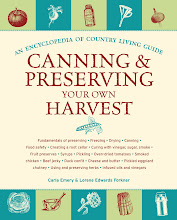In old days, people didn't use the current array of life-killing "cleaning agents," so a suitable baking yeast was quite likely to be around for the invitation, unless you were camping in the Klondike in February. Incidentally, the Klondike miners sometimes drank, straight, that floating layer of grain alcohol that sourdough produces--they called it "hooch." (I don't recommend the stuff.) Even now, if you put out something tempting to eat, like a bowl of lukewarm potato water, you may capture a fine supply of wild yeast.
But if you have a problem capturing a good wild yeast, then start from the store yeast, or borrow a sourdough starter, or buy one. Even a sourdough starter begun from commercial yeast, over a period of time, will probably acquire wild yeasts, too. At Sourdoughs International you'll find many varieties of yeast starter for sale.
SECRETS OF SOURDOUGH
1. Wild yeasts are likely to be in the air, in soil, and on containers.
2. Wild yeasts cause a fermenting action that raises bread like that of tame yeast.
3. Any container sourdough lives in should be non-metal!
4. Don't use metal utensils in sourdough.
5. Never put sourdough in a tightly covered container such as a sealed glass jar. It needs air to live, and it produces a gas that could explode the container.
6. To make bread with sourdough, make sure the bowl, the ingredients, and the place it rises are all warm; 80-95° F is best.
SOURDOUGH STARTERS FROM SCRATCH
When you try to catch a wild yeast, one of four things will happen:
1. Nothing, in which case you try something different.
2. Your mixture has a moldy, awful smell, in which case you throw it out and try something else.
3. Your mixture has a light color and looks foamy or effervescent. It will leaven bread, but it tastes terrible. In that case, you've caught an effective yeast but not one that tastes good.
4. The ultimate: it leavens and it also makes tasty bread.
GLEN HOWERTON'S STARTER Mix 1 c. flour with 1 c. water. Leave it covered with a light cloth 2 or 3 days.
MILK AND WATER STARTER Mix 1 c. unpasteurized milk with a cup of flour. If your milk is pasteurized, let it stand 24 hours first. Leave covered with a light cloth in a warm place.
STARTER WITH COMMERCIAL YEAST Mix 1 c. flour, 1 c. water, and 1 pkg. dry yeast.
HAZEL'S STARTER Mix 1 pkg. dry yeast, 2 1/2 c. warm water, 1 T. sugar, 1 T. salt, and 2 c. sifted flour. Dissolve yeast in 1/2 c. lukewarm water. Let stand 10 minutes. Stir and add remaining water, sugar, salt, and flour. Mix well. Let stand in covered bowl for 3 days at room temperature (78-80° F). The container should be big enough to let the starter rise to about 4 times its starting size. Stir down every day.
PRESERVING SOURDOUGH STARTER: You don't have to struggle to keep it going unless you like eating sourdough every day. It will slow down some if you keep it in the refrigerator until you want it again.
Drying. Before freezers, the old-timers, who may have had a problem with their yeast being overactive in warm weather, preserved it by drying. Dried yeast cakes should keep 5 months or so. [Ed note: a recipe for Homemade Yeast Cakes from Hops follows.]
Reviving and Old Starter. Just stir it up and feed it. Add 1 c. lukewarm water, 1/2 c. flour, and 1 t. sugar. Cover and let stand in a warm place until it foams; then it's ready to use again.
[Adapted from the "Of Sourdough Breads and Starters" section of Chapter 3: Grasses, Grains and Canes. The section includes 11 sourdough bread, pancake, cake and cookie recipes, plus recipes for leftover breads. Illustration copyright 1994 by Cindy Davis.]









No comments:
Post a Comment